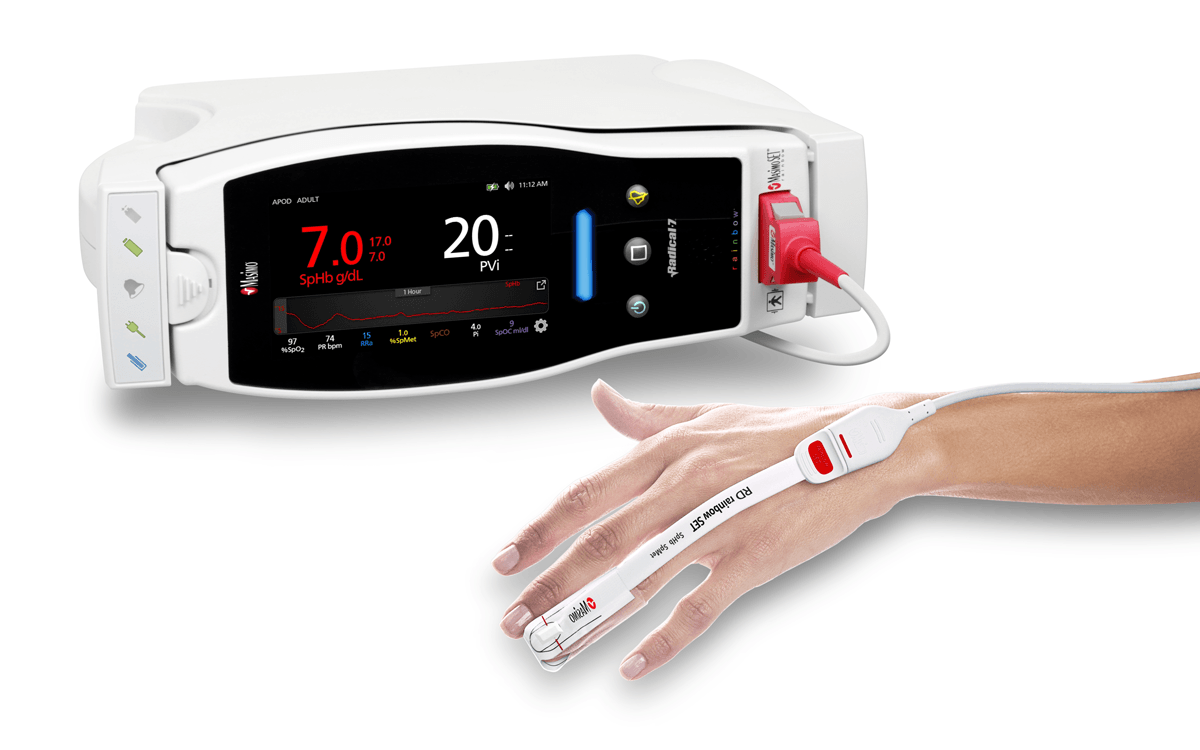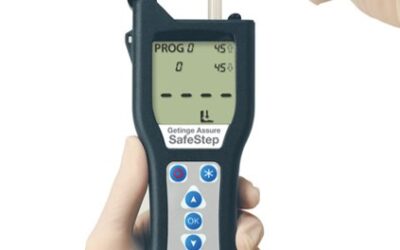
Masimo Radical-7® with SpHb® (Photo: Business Wire)
Masimo (NASDAQ: MASI) announced today the results of a study published in BMC Anesthesiology in which clinicians at Peking Union Medical College in Beijing evaluated the ability of noninvasive and continuous hemoglobin monitoring with Masimo SpHb® to help clincians estimate when to conduct invasive hemoglobin measurement to detect possible anemia in patients undergoing spine or cytoreductive surgery.[1]
Noting that because of the “invasive, time-consuming and intermittent” nature of invasive blood sampling, clincians often forgo these “objective indications” when making transfusion decisions during surgery, Dr. Tang and colleagues sought to determine whether noninvasive, continuous hemoglobin monitoring could aid clinicians in estimating when it might be appropriate to perform an invasive measurement. They enrolled 69 adult patients scheduled for spine surgery or cytoreductive surgery for whom estimated blood loss was more than 15% of total blood volume. The patients were randomly divided into an SpHb group (32 patients) and a standard care group (37 patients). In the SpHb group, diagnostic blood samples were drawn when a patient’s SpHb, measured using a Masimo Radical-7® Pulse CO-Oximeter®, decreased by 1 g/dL. In the standard care group, they were drawn at the clinicians’ discretion. Blood gas analysis was performed using a Radiometer ABL800. The researchers determined the positive predictive value (PPV) of SpHb for the SpHb group and clinician perception in the standard care group in detecting a decrease in lab hemoglobin of more than 1 g/dL or lab hemoglobin of less than 10 g/dL.
The researchers found that the incidence of unnecessary hemoglobin measurement was lower in the SpHb group than the standard care group. For a decrease of greater than 1 g/dL in lab hemoglobin, SpHb had a PPV of 93.3%, compared to 54.5% for clinical perception (p = 0.002). For hemoglobin lower than 10 g/dL, SpHb had a PPV of 86.7%, compared to 50.0% for clinical perception (p = 0.015). In the SpHb group, lab hemoglobin was never less than 7 g/dL. In addition, using Bland-Altman analysis, the researchers calculated that, compared to lab hemoglobin, SpHb had bias and precision of -0.29 +/- 1.03 g/dL, with limits of agreement of -2.30 and 1.72 g/dL. No difference was observed in transfusion units or postoperative hemoglobin concentrations between the two groups.
The researchers concluded, “The SpHb trend tracked changes in hemoglobin satisfactorily during surgery and more accurately estimated the appropriate timing for invasive hemoglobin measurements than the clinicians.” They also noted that “This study was the first diagnostic randomized controlled trial to explore the triage role of Pulse CO-Oximetry in the intraoperative detection of anemia. We found that the trend in SpHb could detect a decrease in Hb in dynamic situations and indicate the appropriate timing for further Hb measurements.”
SpHb monitoring is not intended to replace laboratory blood testing. Clinical decisions regarding red blood cell transfusions should be based on the clinician’s judgment considering, among other factors: patient condition, continuous SpHb monitoring, and laboratory diagnostic tests using blood samples.
References
- Tang Bo, Yu X, Xu L, Zhu A, Zhang Y, and Huang Y. Continuous noninvasive hemoglobin monitoring estimates timing for detecting anemia better than clinicians: a randomized controlled trial. BMC Anesthesiology. 17 May 2019. https://doi.org/10.1186/s12871-019-0755-1










